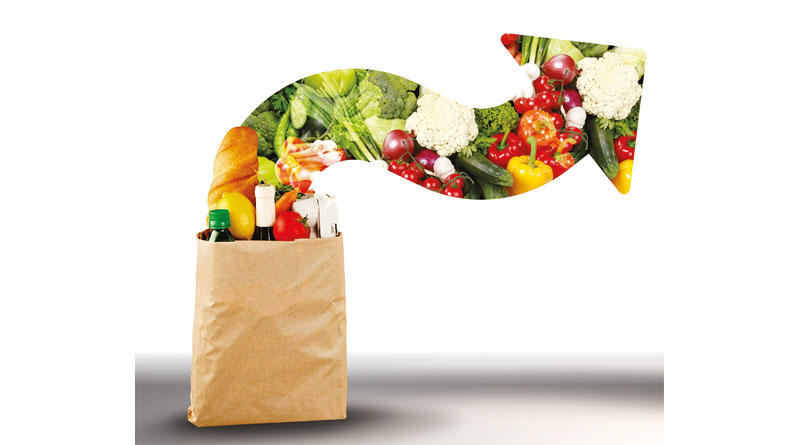Are High Food Prices Here To Stay?

By Mike Meek, Procurement Director at food procurement specialist allmanhall, outlines the key factors impacting food inflation and the effect on food prices, and what to expect in 2022.
Global food prices have reached a ten year high, with current inflation figures reaffirming that prices are being pushed by a combination of global factors throughout the entire supply chain.
Recently, storage services and transportation have contributed to the upward surge, with the greatest impact affecting goods rather than services. The rising global price of energy, surging commodity prices, higher shipping costs are significantly impacting the annual rate of inflation for goods. In December, the latter reached a remarkable 6.9% and services inflation was at just 3.4%.
UK manufacturers are facing significant increases in input prices – this is what manufacturers pay for goods before any onward processing. The annual headline rate of inflation for manufacturers input prices is currently at a massive 13.5%, resulting in significant and ongoing increases in the price for which manufacturers then sell their goods (otherwise known as factory gate prices). Clearly this will have an impact on food procurement and therefore on catering costs.
What is causing global price rises
Global food prices have been impacted by a La Niña weather event for a second consecutive year. Causing significant weather changes in different parts of the world, the result has a drastic impact on food production and harvest yields which then go on to reduce global food commodity inventories. Those inventory levels are important – they provide a protective buffer around food commodity prices and reduced inventories causes greater price volatility.
Meek anticipates that,” global food prices have now peaked and are likely to remain static for a time, but at eye-wateringly high levels. For example, food prices in 2021 were 28% higher than 2020. And it’s not over – La Niña is likely to continue affecting growing conditions until June 2022.”
The price of fertiliser is also playing its part. Global fertiliser prices, nitrogen especially, increased by 175% which was in part driven by the cost of natural gas used in its production.
Well documented across the media, and not just in relation to food, rising electricity and gas prices are also making their mark, impacting us all. These are set to increase further still.
In 2021 allmanhall forecasted that labour challenges and, specifically, driver shortages would have an impact on prices and on product availability. “This is something we can expect to see continue in 2022, “believes Meek. But there is a broader global impact of transportation challenges. Break bulk container prices have exploded to 10 times that of pre-pandemic prices and, whilst there has been a fall from their recent high, shipping costs for bulk and break bulk shipments are still very volatile. A global shift in spending, through less services expenditure and consumers purchasing more products has created elevated volumes of international shipping trade. This has resulted in port congestion and the lack of availability of goods due to ongoing high demand.
2021 concluded with December’s annual CPI rate sitting at a lofty 5.4%. When budgeting for 2022 food costs, “allmanhall’s ongoing analysis anticipates a continued upward trend which is expected to result in a peak in food inflation in the spring,” Meek concludes. “We are approaching food supply chain management with an expectation that 2022 will see inflation upwards of 7%.”
